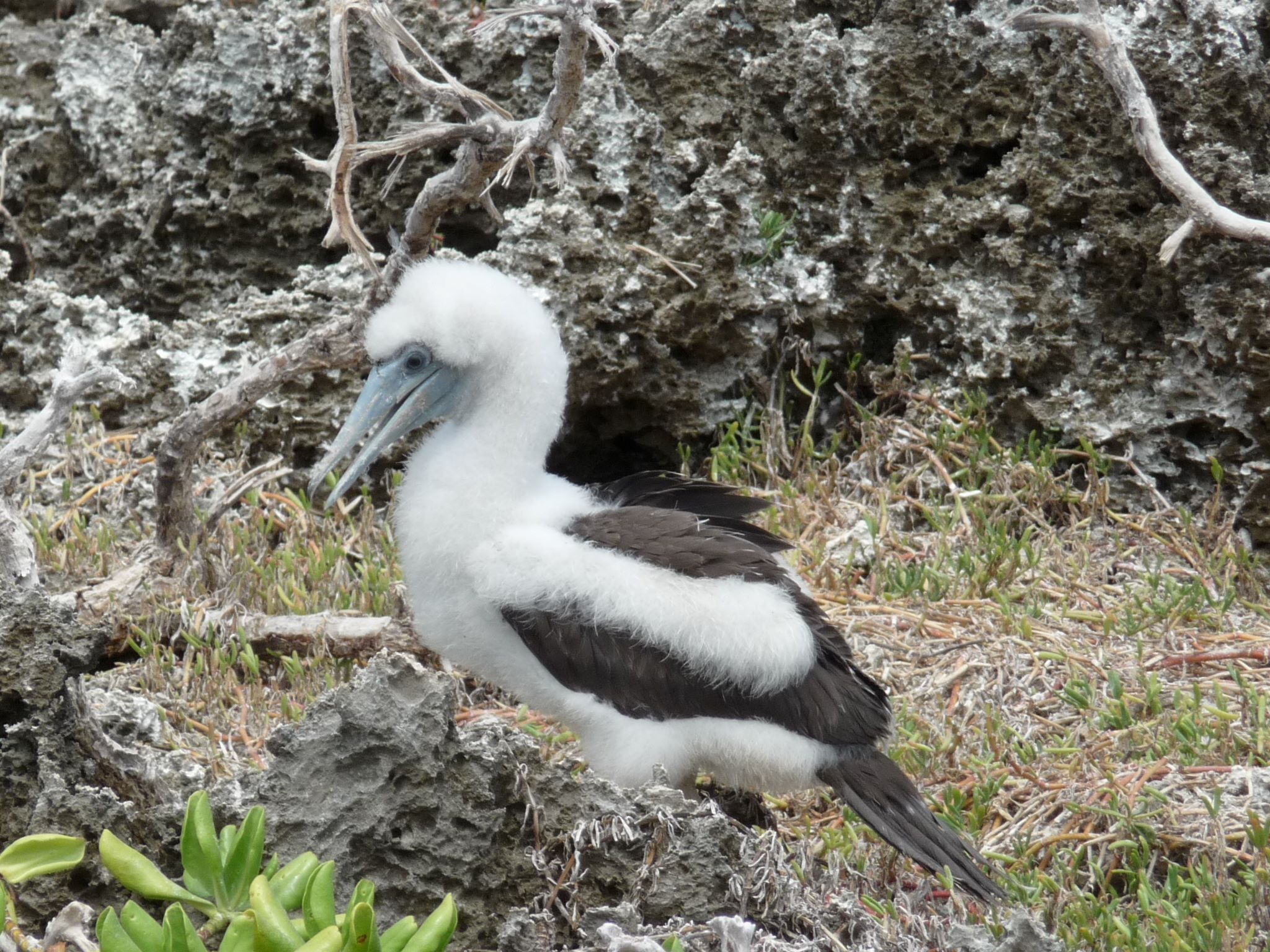
Abbott's Booby: The Rare Jewel of the Indian Ocean, Papasula abbotti
Introduction to Abbott's Booby
The Abbott's Booby (Papasula abbotti) stands as a unique and intriguing species within the seabird community. This rare bird is not just distinguished by its physical characteristics and behavior but also by its critical status as an endangered species. Abbott's Booby is a remarkable member of the Sulidae family, inhabiting a very restricted range in the Indian Ocean, which makes it a subject of significant conservation interest.
Physical Description and Characteristics
Adult Abbott's Boobies are large seabirds, notable for their striking appearance. They grow to about 80 cm in length, with a wingspan that can reach up to 1.6 meters. Their plumage is predominantly white, contrasted with dark grey to black upper wings and tail. The birds have distinctive long, pointed bills and dark eyes. Unlike other booby species, their facial skin is pale, and they have longer, more slender bodies and wings, adaptations that facilitate their unique flying and feeding habits.
Habitat and Geographical Distribution
The Abbott's Booby has one of the most restricted distributions among seabirds, found primarily on and around Christmas Island in the Indian Ocean. This isolated location has been crucial to their survival, offering a habitat relatively free from human disturbances. The bird’s preference for nesting in tall emergent trees in the island's plateau rainforest further distinguishes it from other booby species that typically nest on the ground or on cliffs.
Feeding Habits and Diet
Abbott's Boobies feed primarily on flying fish and squid, which they catch by plunge-diving from great heights. Their slender bodies are perfectly adapted for this style of hunting, allowing them to dive with precision and agility. They are often seen foraging in deep waters far from their island breeding grounds, sometimes traveling over 100 km in search of food.
Breeding and Nesting Behavior
The breeding cycle of the Abbott's Booby is lengthy and complex. They are monogamous and are believed to mate for life. The species has a low reproductive rate, typically producing only one egg every two years. Their nesting sites are unique among boobies, as they prefer tall trees for nesting, unlike their relatives who generally nest on the ground or cliffs.
Courtship and Mating Rituals
Courtship in Abbott's Boobies involves elaborate aerial displays and vocalizations. Males perform impressive flight maneuvers to attract females. Once paired, the birds engage in mutual preening and bill fencing, strengthening their pair bonds. This monogamous relationship is crucial for the successful rearing of their chick.
Egg Laying and Incubation
A single egg is laid and then incubated by both parents for about 55 days, one of the longest incubation periods among seabirds. The parents take turns sitting on the egg, with each stint lasting from a few days to a week. This extended care is necessary for the development of the chick in the unique environment of Christmas Island.
Chick Rearing and Fledging
After hatching, the chick is dependent on its parents for food and protection for an extended period. Fledging takes about 120 to 130 days, much longer than in other booby species. During this time, the chick grows and develops the necessary skills for survival at sea, under the watchful guidance of its parents.
Conservation Status and Threats
The Abbott's Booby is listed as Endangered by the IUCN, with its population under significant threat. Major threats include habitat loss due to phosphate mining activities on Christmas Island, invasive species, and potential human disturbances. Conservation efforts are focused on protecting their nesting habitats and controlling invasive species that threaten their survival.
Conclusion: Preserving the Abbott's Booby
In conclusion, the Abbott's Booby, Papasula abbotti, is a unique and endangered seabird with a highly specialized lifestyle and habitat requirement. Its restricted range and low reproductive rate make it particularly vulnerable to environmental changes and human impacts. The preservation of this species is a critical task, requiring concerted conservation efforts to ensure that this rare jewel of the Indian Ocean continues to thrive in its natural habitat. While the Abbott's Booby is a species far removed from the inland environments of places like Utah, its story highlights the global importance of biodiversity and the need for international conservation efforts.